Archives
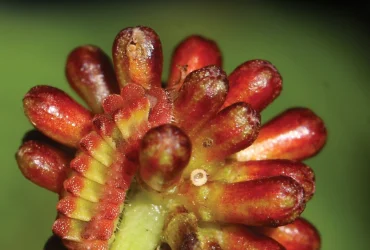 v6i2.145
v6i2.145ISSN: 1800-427X (print)
eISSN: 1800-427X (online)
DOI:10.47605/tapro.v6i2.145
Submitted date: 19 December 2013
Accepted date: 5 February 2014
Published date: 30 August 2014
Pp. 135–136, Pl. 14.
Canscora stricta Sedgw. (Gentianaceae): an endemic species of Western Ghats
M.P. Geethakumary, A.G. Panduranga*, & P. Ravichandran
*Corresponding author. E-mail: agpandurangan@gmail.com
The genus Canscora Lam, known presently from Africa, Australia and tropical Asia, is represented in India by 13 species of which ten are found in Kerala. During our taxonomic studies of Gentianaceae in Kerala, India, the authors collected a species of Canscora from the lateritic region of northern Kerala which, on critical examination and perusal of relevant literature, proved to be Canscora stricta Sedgw., a species hitherto known only from Karnataka State of central Western Ghats.
Section Editor: James L. Reveal
eISSN: 1800-427X (online)
DOI:10.47605/tapro.v6i2.145
Submitted date: 19 December 2013
Accepted date: 5 February 2014
Published date: 30 August 2014
Pp. 135–136, Pl. 14.
Canscora stricta Sedgw. (Gentianaceae): an endemic species of Western Ghats
M.P. Geethakumary, A.G. Panduranga*, & P. Ravichandran
*Corresponding author. E-mail: agpandurangan@gmail.com
The genus Canscora Lam, known presently from Africa, Australia and tropical Asia, is represented in India by 13 species of which ten are found in Kerala. During our taxonomic studies of Gentianaceae in Kerala, India, the authors collected a species of Canscora from the lateritic region of northern Kerala which, on critical examination and perusal of relevant literature, proved to be Canscora stricta Sedgw., a species hitherto known only from Karnataka State of central Western Ghats.
Section Editor: James L. Reveal
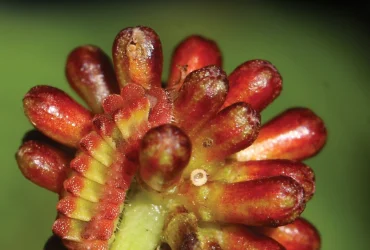 v6i2.144
v6i2.144ISSN: 1800-427X (print)
eISSN: 1800-427X (online)
DOI:10.47605/tapro.v6i2.144
Submitted date: 13 June 2013
Accepted date: 26 October 2013
Published date: 30 August 2014
Pp. 132–134.
Andrographis longipedunculata (Sreem.) L.H. Cramer (Acanthaceae) from northwest India
U. Tiwari* & K. Ravikumar
*Corresponding author. E-mail: tigerumesh11@gmail.com
As a part of survey and collection of medicinal plants of India, under the Center of Excellence Programme supported by the Ministry of Environment & Forests, the authors collected the endemic species Andrographis longipedunculata (Sreem.) L.H. Cramer in the states of Gujarat and Rajasthan. This species has so far not been reported in these states
Section Editor: James L. Reveal
eISSN: 1800-427X (online)
DOI:10.47605/tapro.v6i2.144
Submitted date: 13 June 2013
Accepted date: 26 October 2013
Published date: 30 August 2014
Pp. 132–134.
Andrographis longipedunculata (Sreem.) L.H. Cramer (Acanthaceae) from northwest India
U. Tiwari* & K. Ravikumar
*Corresponding author. E-mail: tigerumesh11@gmail.com
As a part of survey and collection of medicinal plants of India, under the Center of Excellence Programme supported by the Ministry of Environment & Forests, the authors collected the endemic species Andrographis longipedunculata (Sreem.) L.H. Cramer in the states of Gujarat and Rajasthan. This species has so far not been reported in these states
Section Editor: James L. Reveal
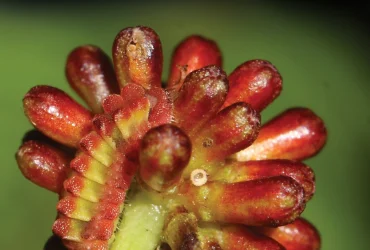 v6i2.143
v6i2.143ISSN: 1800-427X (print)
eISSN: 1800-427X (online)
DOI:10.47605/tapro.v6i2.143
Submitted date: 9 April 2013
Accepted date: 1 May 2014
Published date: 30 August 2014
Pp. 110–131, pls. 12–13.
A COMPILATION AND ANALYSIS OF FOOD PLANTS UTILIZATION OF SRI LANKAN BUTTERFLY LARVAE (PAPILIONOIDEA)
H.D. Jayasinghe*, S.S. Rajapaksha & C. de Alwis
*Corresponding author. E-mail: himesh.jayasinghe1@gmail.com
Abstract
Larval food plants (LFPs) of Sri Lankan butterflies are poorly documented in the historical literature and there is a great need to identify LFPs in conservation perspectives. Therefore, the current study was designed and carried out during the past decade. A list of LFPs for 207 butterfly species (Super family Papilionoidea) of Sri Lanka is presented based on local studies and includes 785 plant-butterfly combinations and 480 plant species. Many of these combinations are reported for the first time in Sri Lanka. The impact of introducing new plants on the dynamics of abundance and distribution of butterflies, the possibility of butterflies being pests on crops, and observations of LFPs of rare butterfly species, are discussed. This information is crucial for the conservation management of the butterfly fauna in Sri Lanka.
Key words : conservation, crops, larval food plants (LFPs), pests, plant-butterfly combination
Section Editors: James L. Reveal & Jeffrey Miller
eISSN: 1800-427X (online)
DOI:10.47605/tapro.v6i2.143
Submitted date: 9 April 2013
Accepted date: 1 May 2014
Published date: 30 August 2014
Pp. 110–131, pls. 12–13.
A COMPILATION AND ANALYSIS OF FOOD PLANTS UTILIZATION OF SRI LANKAN BUTTERFLY LARVAE (PAPILIONOIDEA)
H.D. Jayasinghe*, S.S. Rajapaksha & C. de Alwis
*Corresponding author. E-mail: himesh.jayasinghe1@gmail.com
Abstract
Larval food plants (LFPs) of Sri Lankan butterflies are poorly documented in the historical literature and there is a great need to identify LFPs in conservation perspectives. Therefore, the current study was designed and carried out during the past decade. A list of LFPs for 207 butterfly species (Super family Papilionoidea) of Sri Lanka is presented based on local studies and includes 785 plant-butterfly combinations and 480 plant species. Many of these combinations are reported for the first time in Sri Lanka. The impact of introducing new plants on the dynamics of abundance and distribution of butterflies, the possibility of butterflies being pests on crops, and observations of LFPs of rare butterfly species, are discussed. This information is crucial for the conservation management of the butterfly fauna in Sri Lanka.
Key words : conservation, crops, larval food plants (LFPs), pests, plant-butterfly combination
Section Editors: James L. Reveal & Jeffrey Miller
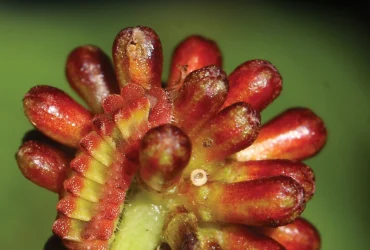 v6i2.142
v6i2.142ISSN: 1800-427X (print)
eISSN: 1800-427X (online)
DOI:10.47605/tapro.v6i2.142
Submitted date: 9 April 2013
Accepted date: 1 May 2014
Published date: 30 August 2014
Pp. 100–109, pls. 9–11.
POLLINATION ECOLOGY OF Lumnitzera racemosa WILLD. (COMBRETACEAE), A NON-VIVIPAROUS MANGROVE TREE
A.J. Solomon Raju*, Rajendra Kumar & B. Rajesh
*Corresponding author. E-mail: ajsraju@yahoo.com
Abstract
Lumnitzera racemosa is a non-viviparous evergreen mangrove tree species. It is a massive bloomer from mid-July to mid-August. The flowers are bisexual, self-compatible, self-pollinating and exhibit a mixed breeding system. The plant is temporally dioecious with marked protandry and a non-receptive stigma on day one of anthesis with a receptive stigma on days two and three. Fruit set is approximately 90% due to self and cross-pollination. The floral characters are related to pollination by generalized flower-visiting insects, notably actinomorphy, white spreading petals, limited but easily accessible nectar, and position of stamens. Pollinators include bees, wasps and butterflies. Fruits are invariably 1-seeded despite the presence of 3–5 ovules. Natural regeneration is low perhaps due to abortion of embryos or the feeding of embryos by small grubs. Fallen mature fruits become fibrous in water and this may aid dispersal in the sea. However, fruit germination and seedling establishment is curtailed due to their salinity-sensitivity.
Key words : floral sexual functions, fruit set, germination, mixed breeding system, seedling
Section Editor: James L. Reveal
eISSN: 1800-427X (online)
DOI:10.47605/tapro.v6i2.142
Submitted date: 9 April 2013
Accepted date: 1 May 2014
Published date: 30 August 2014
Pp. 100–109, pls. 9–11.
POLLINATION ECOLOGY OF Lumnitzera racemosa WILLD. (COMBRETACEAE), A NON-VIVIPAROUS MANGROVE TREE
A.J. Solomon Raju*, Rajendra Kumar & B. Rajesh
*Corresponding author. E-mail: ajsraju@yahoo.com
Abstract
Lumnitzera racemosa is a non-viviparous evergreen mangrove tree species. It is a massive bloomer from mid-July to mid-August. The flowers are bisexual, self-compatible, self-pollinating and exhibit a mixed breeding system. The plant is temporally dioecious with marked protandry and a non-receptive stigma on day one of anthesis with a receptive stigma on days two and three. Fruit set is approximately 90% due to self and cross-pollination. The floral characters are related to pollination by generalized flower-visiting insects, notably actinomorphy, white spreading petals, limited but easily accessible nectar, and position of stamens. Pollinators include bees, wasps and butterflies. Fruits are invariably 1-seeded despite the presence of 3–5 ovules. Natural regeneration is low perhaps due to abortion of embryos or the feeding of embryos by small grubs. Fallen mature fruits become fibrous in water and this may aid dispersal in the sea. However, fruit germination and seedling establishment is curtailed due to their salinity-sensitivity.
Key words : floral sexual functions, fruit set, germination, mixed breeding system, seedling
Section Editor: James L. Reveal
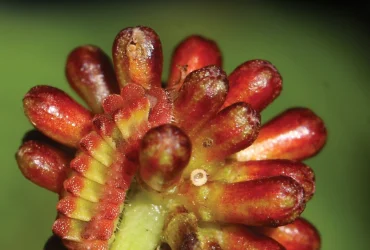 v6i2.141
v6i2.141ISSN: 1800-427X (print)
eISSN: 1800-427X (online)
DOI:10.47605/tapro.v6i2.141
Submitted date: 13 March 2013
Accepted date: 25 April 2014
Published date: 30 August 2014
Pp. 90–99, pls. 7–8.
MELITTOPHILY AND MALACOPHILY IN Ipomoea pes-caprae (CONVOLVULACEAE)
A.J. Solomon Raju*, P. Suvarna Raju & K. Venkata Ramana
*Corresponding author. E-mail: ajsraju@yahoo.com
Abstract
Ipomoea pes-caprae is a mangrove associate often found along shorelines. It flowers during August–February and is hermaphroditic and an obligate out-crosser due to self-incompatibility. It is both melittophilous and malacophilous. The natural fruit set rate is less than 10% probably due to the wastage of pollen in self-pollination, the ephemeral nature of flowers, predation, and nutrient requirements. Seeds are impermeable to water and germinate readily if they are covered and abraded by sand; those exposed to seawater rot and subsequently perish. The low natural fruit set rate, the mortality of seeds and seedlings due to rotting, burial by sand, space constraint, and shading by established plants appear to be regulating the population size of I. pes-caprae. The plant also propagates vegetatively through the expansion of branches that are broken into fragments by storm waves, transported by water, and then washed onshore into new locations.
Key words : creeper, mangrove associate, post-zygotic self-incompatibility, vegetative propagation
Section Editor: James L. Reveal
eISSN: 1800-427X (online)
DOI:10.47605/tapro.v6i2.141
Submitted date: 13 March 2013
Accepted date: 25 April 2014
Published date: 30 August 2014
Pp. 90–99, pls. 7–8.
MELITTOPHILY AND MALACOPHILY IN Ipomoea pes-caprae (CONVOLVULACEAE)
A.J. Solomon Raju*, P. Suvarna Raju & K. Venkata Ramana
*Corresponding author. E-mail: ajsraju@yahoo.com
Abstract
Ipomoea pes-caprae is a mangrove associate often found along shorelines. It flowers during August–February and is hermaphroditic and an obligate out-crosser due to self-incompatibility. It is both melittophilous and malacophilous. The natural fruit set rate is less than 10% probably due to the wastage of pollen in self-pollination, the ephemeral nature of flowers, predation, and nutrient requirements. Seeds are impermeable to water and germinate readily if they are covered and abraded by sand; those exposed to seawater rot and subsequently perish. The low natural fruit set rate, the mortality of seeds and seedlings due to rotting, burial by sand, space constraint, and shading by established plants appear to be regulating the population size of I. pes-caprae. The plant also propagates vegetatively through the expansion of branches that are broken into fragments by storm waves, transported by water, and then washed onshore into new locations.
Key words : creeper, mangrove associate, post-zygotic self-incompatibility, vegetative propagation
Section Editor: James L. Reveal
Hubungi Kami
The ultimate aim of the journal is to provide an effective medium for communication of the latest and best scientific information.
Copyright © 2020 Taprobanica. All Rights Reserved
Jasa Pembuatan Website by IKT




